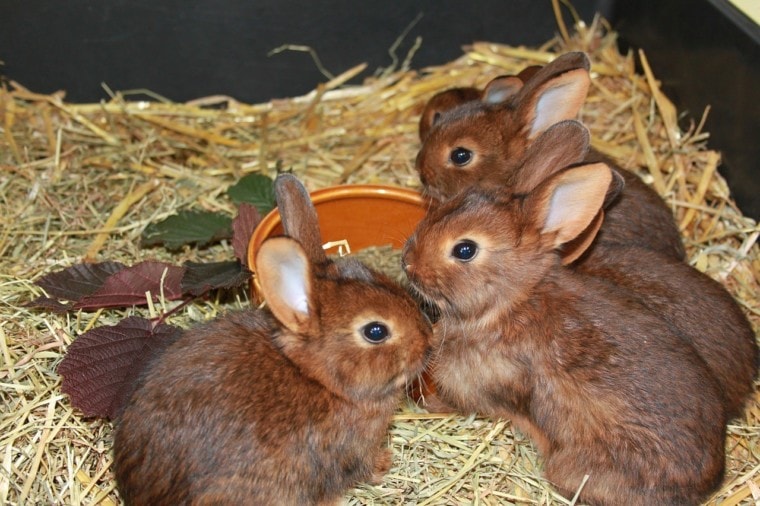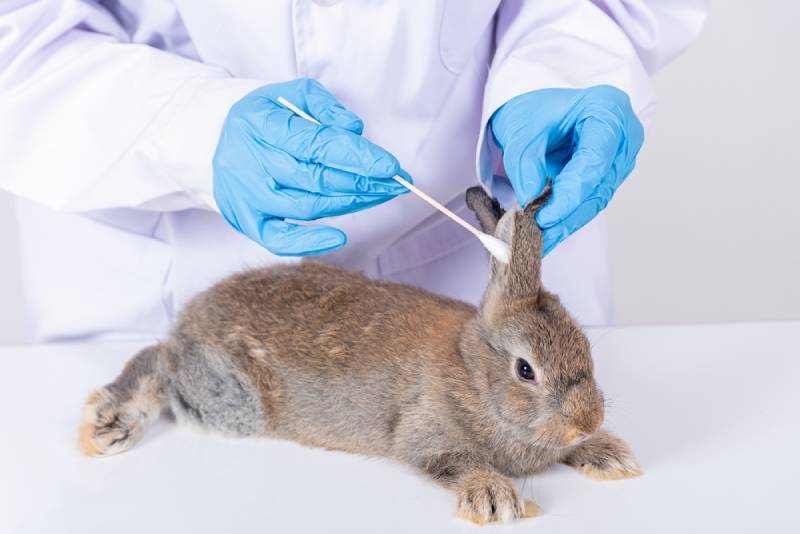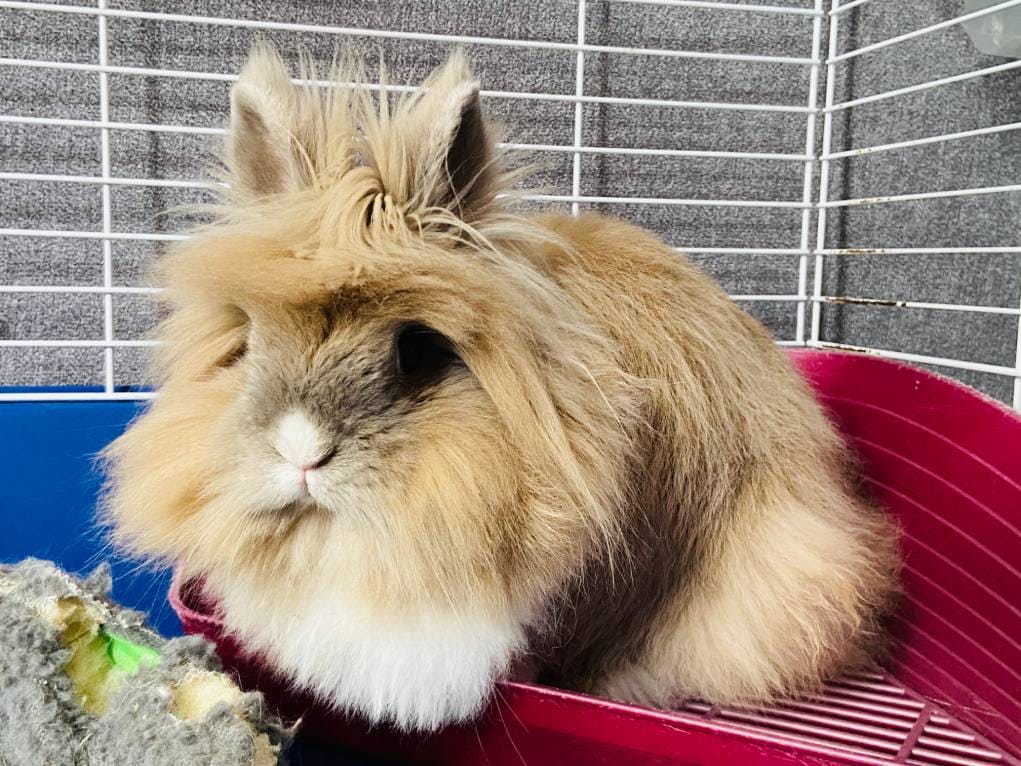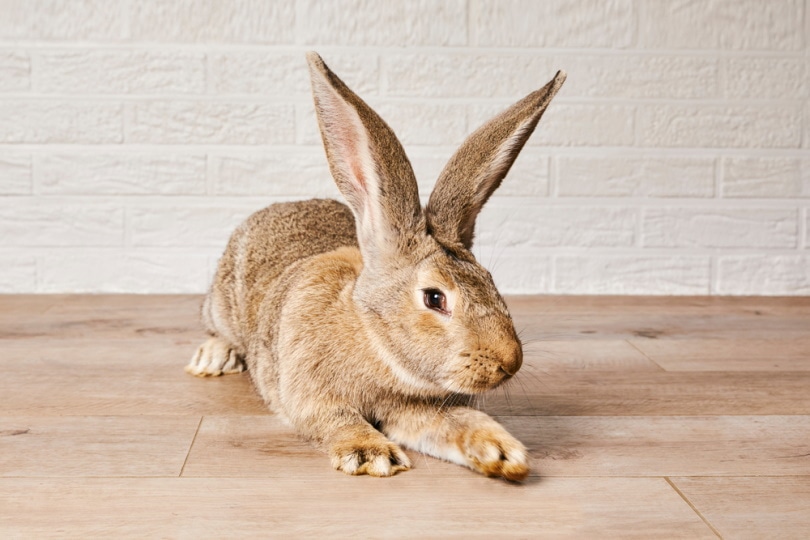
Click to Skip Ahead
The Deilinaar Rabbit is a medium-sized Dutch rabbit breed that hails from the town of Deli and was first developed in the 1930s. The breeds used to create the Deilenaar likely include the Belgian Hare and Chinchilla Rabbit.
Accepted as an official breed by Dutch breeders in the 1940s, it was then accepted by the British Rabbit Council in the 1980s but has not yet been officially recognized by the American Rabbit Breeders Association. The breed is rarely found outside Europe and is most often found in its homeland.
| Size: | Medium |
| Weight: | Up to 7 lbs |
| Lifespan: | 6 – 9 years |
| Similar Breeds: | Belgian Hare, Flemish Giant, Chinchilla Rabbit |
| Suitable for: | Owners looking for a rare breed that is hardy and calm |
| Temperament: | Level-headed, hardy, friendly, lively |
The Deilenaar is a rare rabbit breed. Even in the Netherlands where it was first developed, it is not a common find. It can be found, in small numbers, in some European countries, including the UK, and its owners praise it for its hardiness and its friendly nature. However, because the breed is not recognized by ARBA, even if it can be found, it may not be sold as a Deilenaar. Its exact roots are somewhat unclear but it was likely bred from a combination of some of the New Zealand Red Rabbit, Tan Rabbit, Flemish Giant, Belgian Hare, and Chinchilla Rabbit.
Deilenaar Rabbit Breed Characteristics
How Much Do These Rabbits Cost?
As a very rare breed of rabbit, the Deilenaar can be difficult to find at all, especially outside the Netherlands and the UK. As such, finding one of these rabbits will be your first challenge. It is not recognized by ARBA so you are unlikely to find any official breeders through them. Try locating breed fan groups on social media and in your local area, if any exist. They may be able to point you in the direction of breeders or, at least, let you know where their Deilenaars came from.
If you do find one this way, you may need to pay a little more, although the fact that it isn’t recognized by ARBA does keep the cost down a little. Expect to pay around $100 for a Deilenaar. The rabbit’s rarity also makes it unlikely that you will find one in a rescue or shelter. If you do, adoption fees are usually between $25 and $50, depending on the policies and costs of the shelter it comes from.
Temperament & Intelligence of the Deilenaar Rabbit
The Deilenaar Rabbit is described as being friendly and affectionate. As with all rabbits of all breeds, how friendly the Deilenaar is will be determined by how much contact it has had with humans, especially during its younger years, and the kinds of experience it has had. It is said to be an intelligent breed, too, which means that it should be easy to litter train a Deilenaar, making care and cleaning easier.
Do These Rabbits Make Good Pets?👪
The Deilenaar is considered a level-headed rabbit that can be affectionate, as long as it is handled regularly and has not had any negative experiences in its past. If you are keeping the rabbit as a pet, keep it as an indoor rabbit. It will spend more time in your company, getting used to your voice, and it will be more likely to enjoy being held and handled.
With that said, the Deilenaar can survive as an outdoor rabbit, as long as you don’t live in an area with too extreme weather conditions or where the rabbit will be plagued by potential predators. To ensure the Deilenaar adapts to life as a pet rabbit, handle it and spend time with it every day.
Does This Rabbit Get Along With Other Pets?
In the wild, rabbits are social animals that live with other rabbits. As pets, they can become depressed and ill if they are kept alone. As such, it is recommended that you keep at least two rabbits because they will provide company for one another.
And while the rabbit will usually get along fine with other pets, it is really a question of how the other animals will treat the rabbit. Never leave your rabbit unattended with dogs or cats, even if they seem like they are being friendly. Rabbits are prey to a lot of animals. Cats are less likely to attack because of the size of the rabbit, but dogs may view Deilenaars as being prey.
Things to Know When Owning a Deilenaar Rabbit:
If you can find a reputable breeder, and keep two or more Deilenaars together in a single group, they can make excellent pets with regular handling. However, they aren’t necessarily the ideal pet for all potential owners. Below are some factors to consider when deciding whether this is the right pet for you.
Food & Diet Requirements🥕
The diet of the Deilenaar is the same as any other pet rabbit. The majority of its diet will be made up of hay and grass. This typically accounts for between 70% and 75% of their diet. Hay provides the fiber your rabbit needs and it also helps maintain healthy teeth. You can also feed some rabbit food pellets, which provide a good variety of vitamins and minerals, as well as fresh vegetables, especially leafy greens.
Habitat & Hutch Requirements🏠
The breed can be kept as an indoor or outdoor rabbit. Generally, if you want to raise a pet rabbit that enjoys being around people and spending time with its human family, you should keep the rabbit indoors because it will spend more time in your company, getting used to your voice. A rabbit needs to be able to stretch out and run around the cage, so provide at least 3 square feet of floor space. Inside the cage, you will want a food bowl, hay feeder, and water bottle, and you should also provide some toys for further enrichment. Choose chew toys because these, along with a diet including good hay, can help maintain healthy teeth.
Exercise & Sleeping Needs🐇
As well as a hutch or cage, most rabbits have a run for their exercise time. Rabbits need at least 2 hours and ideally 4 hours out of their cage every single day. This can be provided inside or outside, but if you are going to let your rabbit roam indoors, you will need to ensure that the house or the room is rabbit-proof. Ensure there are no wires the rabbit can get into, and that anything edible or that can be easily chewed is covered or at least safe.
A common alternative is to use a run. Runs can be placed indoors or, when the weather is suitable, they can be put outdoors so your rabbit gets fresh air and can enjoy eating the grass. Don’t leave the rabbit unattended while it is in an outdoor run, because rabbits are prey to large birds as well as other predators like domestic cats and dogs.
Training 🥎
Some rabbit species can be trained, and because the Deilenaar is considered an intelligent breed that is also affectionate, it can be litter trained. Rabbits are tidy and clean animals, which means that they will usually toilet in the same spot in their cage every time they go. You can use this to your advantage and try placing a litter tray in the area. Initially, put bedding in the litter tray but gradually start to introduce litter over time. You should find the rabbit continues to pee and poop in the tray. If it moves its business to a different area of the cage, move the tray and continue with your efforts.
Grooming✂️
Some grooming is required to keep a rabbit healthy and looking its best. The Deilenaar has a thick but relatively short coat. It will need brushing twice a week. The brushing won’t take long and you shouldn’t need to cut the coat. Check nails regularly and cut them if they are getting long. Look inside the ears for signs of infection, too, and monitor your rabbit’s teeth. Rabbit teeth never stop growing and they rely on the constant grinding of hay and food to help maintain their length.
If your rabbit’s teeth are getting longer, check the ratio of hay to other foods and ensure that your rabbit has access to chew toys. Otherwise, you may need to have the vet cut the teeth down.
Lifespan and Health Conditions🏥
The Deilenaar is a hybrid or crossbreed, which means that it is less likely to suffer hereditary conditions. However, the Deilenaar is susceptible to diseases and illnesses that rabbits generally suffer from. This includes dental problems, as mentioned above, along with GI stasis, which is caused by furballs, and respiratory infections.
Male vs Female
Very little difference between the personality of male and female Deilenaars has been noted, although male rabbits do tend to grow a little larger than females.
3 Little-Known Facts About Deilenaar Rabbits
1. They Were First Bred in the Netherlands
The breed was first bred in the Netherlands in the 1930s by breeder Mr. Ridderhorf. Not much is really known of the breeding or even the breeds of rabbits that were used to achieve the Deilenaar, although experts have speculated.
2. They Are Not Recognized By ARBA
Having been developed in the 1930s, the breed’s spread was very slow because of World War II. Eventually, however, it did spread to other countries in Europe and, in the 1980s, was recognized as an official breed in the UK. To this day, the Deilenaar has not been recognized by the American Rabbit Breeders Association, ARBA.
3. Their Color May Come From the Belgian Hare
There are no records of how the breed was first created but experts do have their opinions. Some believe it came about as a result of breeding the Flemish Giant and the Tan Rabbit while others speculate it was a combination of the Belgian Hare, Chinchilla Rabbit, and New Zealand Red Rabbit.
Final Thoughts
The Deilenaar is a rare rabbit breed, especially outside its home country of the Netherlands. Its tan color is attractive and the breed’s friendly and even loving nature makes it a good choice as a pet breed. It is also relatively low maintenance, intelligent enough to be litter trained, and it will take to handling and petting over time.
However, the breed is not recognized by ARBA and it really is difficult to find breeders outside the Netherlands and a handful of breeders in the UK. It is a hardy breed that lives up to 9 years in captivity and doesn’t have any special care requirements.
Featured Image Credit: Eric Felber, Pixabay








